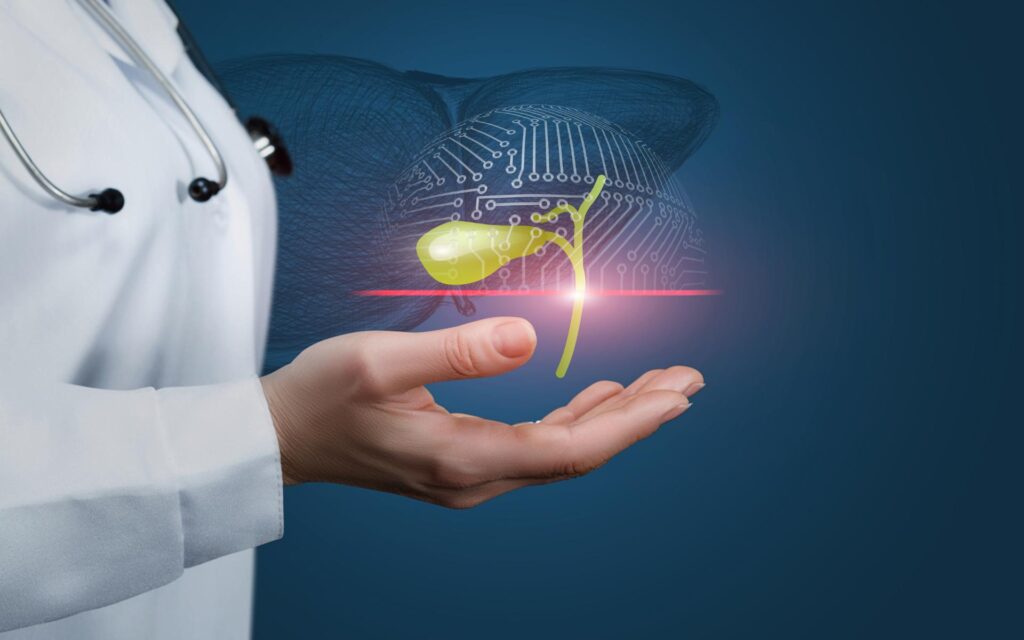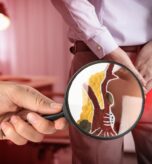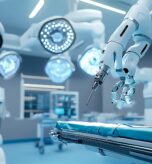
The gallbladder is a small, pear-shaped organ located beneath the liver that plays a crucial role in digestion by storing and releasing bile. While it may be small, issues with the gallbladder can cause significant discomfort and lead to severe health problems if left untreated. Many people are unaware of the signs of gallbladder disease until the condition worsens. Recognizing the symptoms early can help in seeking timely treatment and preventing complications.
In this blog, we will discuss the common signs of gallbladder problems, potential causes, and what steps to take if you experience any symptoms.
Common Signs of Gallbladder Problems
1. Persistent Pain in the Upper Right Abdomen
One of the most noticeable symptoms of a gallbladder problem is a sharp or dull pain in the upper right side of the abdomen, just below the ribcage. This pain can:
- Worsen after eating fatty or greasy foods
- Last for a few minutes to several hours
- Sometimes radiate to the back or right shoulder
This pain, known as biliary colic, is caused by gallstones blocking the bile ducts, preventing the proper flow of bile.
2. Nausea and Vomiting
Frequent nausea and vomiting, especially after meals, can indicate gallbladder disease. If you often feel sick after eating, it may be due to poor bile flow, which affects digestion.
💡 When to worry: If nausea and vomiting are persistent and occur along with severe abdominal pain, it could signal an emergency condition such as acute cholecystitis (gallbladder inflammation).
3. Indigestion and Bloating
People with gallbladder issues often experience symptoms similar to indigestion, including:
- Excessive burping
- Gas and bloating
- Feeling full quickly after eating
This happens because bile is not being properly released into the intestines, leading to digestive discomfort.
4. Jaundice (Yellowing of Skin and Eyes)
A yellow tint in the skin and eyes is a serious sign of a blocked bile duct due to gallstones. When bile can’t flow properly, bilirubin (a yellow pigment in bile) builds up in the bloodstream, leading to jaundice.
🚨 Seek immediate medical attention if you notice yellowing of the skin, as it may indicate a severe blockage that requires urgent medical treatment.
5. Dark Urine and Pale Stools
Changes in urine and stool color are warning signs of gallbladder disease. If your urine appears dark brown or tea-colored, it could indicate excess bilirubin in the body due to a bile duct obstruction.
Similarly, pale or clay-colored stools suggest that bile is not reaching the intestines properly. These signs often accompany jaundice and should not be ignored.
6. Fever and Chills
If you experience fever, chills, and sweating along with abdominal pain, it may indicate a gallbladder infection.
Common infections include:
✔️ Cholecystitis (Inflamed Gallbladder) – Often caused by gallstones blocking the bile duct
✔️ Cholangitis (Bile Duct Infection) – A life-threatening infection requiring immediate treatment
💡 Don’t ignore persistent fever and chills! Seek medical care if these symptoms occur alongside abdominal pain.
Causes of Gallbladder Problems
Gallbladder problems can be caused by various factors, including:
🔹 Gallstones (Cholelithiasis): Hardened deposits of cholesterol or bile salts that block bile ducts
🔹 Gallbladder Inflammation (Cholecystitis): Caused by gallstones, infections, or injury
🔹 Biliary Dyskinesia: A disorder where the gallbladder doesn’t empty properly
🔹 Gallbladder Polyps: Growths inside the gallbladder that may require removal
🔹 Gallbladder Cancer (Rare but Serious): Uncommon but life-threatening if not detected early
What to Do Next If You Have Gallbladder Symptoms
1. Consult a Gastroenterologist or Surgeon
If you are experiencing persistent gallbladder symptoms, it’s important to visit a specialist. A gastroenterologist in Mohali or a gastro surgeon in Mohali can evaluate your condition and recommend the best treatment.
2. Undergo Diagnostic Tests
Your doctor may recommend the following tests to diagnose gallbladder disease:
✔️ Ultrasound: The most common test to detect gallstones
✔️ HIDA Scan: Checks gallbladder function and bile flow
✔️ CT Scan or MRI: Provides detailed images of the gallbladder and bile ducts
✔️ Blood Tests: Identifies infection or liver function abnormalities
3. Make Dietary Changes
If you have gallbladder problems, your diet plays a crucial role in managing symptoms.
✅ Foods to Eat:
✔️ High-fiber foods (vegetables, fruits, whole grains)
✔️ Lean proteins (chicken, fish, tofu)
✔️ Healthy fats (avocados, olive oil, nuts)
❌ Foods to Avoid:
🚫 Fatty and fried foods
🚫 Processed and sugary foods
🚫 Dairy products (if they trigger symptoms)
4. Consider Treatment Options
🔹 Medications: In some cases, doctors may prescribe bile acid pills to dissolve gallstones, but this is a slow process and not always effective.
🔹 Laparoscopic Gallbladder Removal (Cholecystectomy): A minimally invasive surgery to remove the gallbladder. It’s the most common and effective treatment for gallstones.
🔹 Endoscopic Procedures: If gallstones are blocking the bile duct, ERCP (Endoscopic Retrograde Cholangiopancreatography) may be used to remove them.
When to Seek Emergency Medical Help
🚨 Visit the emergency room immediately if you experience:
✔️ Severe, persistent upper-right abdominal pain
✔️ Fever, chills, and rapid heartbeat
✔️ Yellowing of the skin and eyes (jaundice)
✔️ Dark urine and pale stools
Gallbladder infections and bile duct blockages can become life-threatening if left untreated, so don’t delay seeking medical attention!
Final Thoughts
Gallbladder problems can cause discomfort and lead to serious complications if ignored. Recognizing the early warning signs, making dietary changes, and seeking timely medical intervention can prevent long-term health issues.
If you are experiencing gallbladder pain, indigestion, or jaundice, consult the best gastro surgeon in Mohali at Smart Clinics for expert diagnosis and treatment.
📍 Book an appointment today at Smart Clinics in Mohali to get personalized care for your digestive health.





